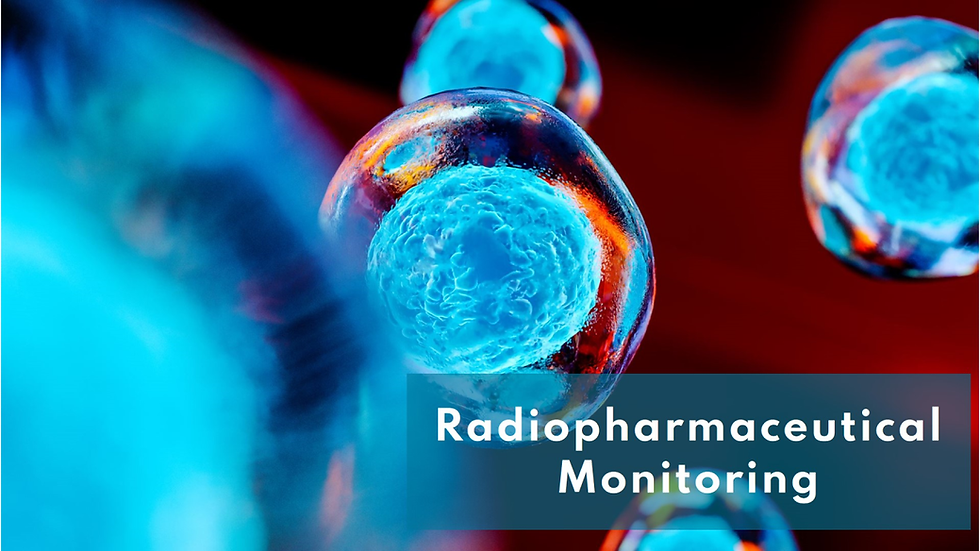Monitoring Radiopharmaceuticals: Pharmacovigilance in Action
- Content Desk

- Aug 8, 2024
- 2 min read
Radiopharmaceuticals, a unique class of medicinal products that contain radioactive isotopes, are used in both the diagnosis and treatment of various diseases, including cancer and cardiovascular conditions. Given their specialized nature and potential risks, effective pharmacovigilance (PV) is crucial to monitor and manage adverse effects associated with these products. PV in radiopharmaceuticals involves the systematic collection, analysis, and interpretation of data on adverse drug reactions (ADRs) and other drug-related problems, ensuring patient safety and enhancing therapeutic outcomes.
The complexity of radiopharmaceuticals necessitates a robust PV framework that can address their specific challenges. Unlike conventional drugs, radiopharmaceuticals involve radioactive substances that can pose unique safety risks, such as radiation exposure to patients and healthcare providers. The pharmacokinetics and bio-distribution of these agents can vary significantly based on the isotope and the formulation used, requiring meticulous monitoring. Additionally, the potential for delayed adverse effects due to radiation necessitates long-term follow-up and data collection, further complicating the PV process. Implementing advanced data analytics and real-world evidence (RWE) can help identify and evaluate safety signals, ensuring timely interventions and regulatory actions.
The integration of PV into the lifecycle of radiopharmaceuticals starts from the early stages of clinical development and continues through post-market surveillance. During clinical trials, close monitoring for both immediate and delayed ADRs is essential to establish a comprehensive safety profile. Post-approval, ongoing PV activities are crucial to detect rare or long-term adverse effects that may not have been evident during clinical development. Manufacturers are required to maintain rigorous reporting systems and collaborate with regulatory authorities to ensure the continued safety of these products. Collaboration with healthcare providers is also vital, as they play a key role in reporting ADRs and providing insights into the clinical use of radiopharmaceuticals.
In conclusion, the unique nature of radiopharmaceuticals demands an enhanced focus on pharmacovigilance to ensure their safe and effective use. By leveraging advanced monitoring techniques and fostering collaboration among stakeholders, the PV system can effectively manage the risks associated with these products. Ensuring the safety of radiopharmaceuticals not only protects patients but also supports the development of innovative diagnostic and therapeutic tools in nuclear medicine. As the field of radiopharmaceuticals continues to evolve, robust PV practices will remain essential in maintaining public trust and advancing medical science.





Comments